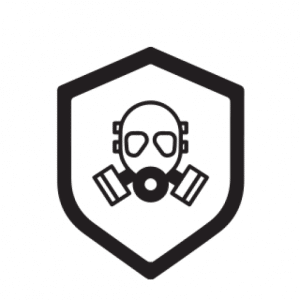You’re out camping in the woods, and you lose your way, and the food you bring is running low. What do you do?
In addition to not eating your last granola bar, you can also eat wild plants that are safe to consume.
Some of them are easy to spot, while others are more elusive. Here’s how to identify some common wild edible plants:
Recognize Common Wild Edibles
Before you get into trouble, learn to recognize some common wild edibles as much as possible from the book, library, internet, or expert.
Because even you get the skill to identify an edible plant in the wild, it always has exceptional.
It is best to be familiar with common wild edibles before going out camping.
Here is the list of:
Rule of Thumb/ General Guideline
Keep in mind that this is only the general guideline on identifying the wild plants that are safe to consume or toxic.
And there is no 100% guarantee.
Thus, do not eat wild plants that you are not familiar with for safety purposes.
Never assume that if an animal eats something, it isn’t poisonous to humans.
Because animal has different digestion and immune system than human.
Animals have different tolerance and sensitivity to chemicals, thus don’t take it as a measurement for edibility.
Avoid Plants with Strong, Disagreeable Odor
Crush the leaves and smell; if the scent is strong and unpleasant, then probably your stomach also cannot take it.
Or “Almond” scent in the woody parts and leaves.
Some Plant needs to be cooked to Consume
Some plants are only edible when cooked.
It is better to cook the plant before eating it, not only for the edibility but also the hygiene and safety reasons.
Avoid Plants with Three-leaved growth Pattern
Plant like poison ivy is covered in a poisonous chemical called Urushiol.
If you touch it, it will cause an itchy red rash on the skin.
Avoid Berries that Appear to be Spoilage
The damage is usually caused by bacteria and mold, enzymatic processes, or bruising.
Test it one by one, in Small Amount
If you think a plant is safe to consume, you can try a small amount first.
Steer Clear from a Plant if it has These Characteristics:
– Milky or discolored sap
– Spines, fine hairs, or thorns
– Beans, bulbs, or seeds inside pods
– Bitter or soapy taste
– Dill, carrot, parsnip, or parsley-like foliage
– Grain heads with pink, purplish, or black spurs
Source: artofmanliness
Universal Edibility Test
The universal edibility test is a survival procedure that you can use to determine whether or not the plants you found in the wild are likely safe to consume.
Make the Universal Edibility Test your last resort/ plan.
Only perform when you are in a desperate situation and out of other options because it involves using your body to test for edibility.
Some dangerous plants don’t show any obvious signs when they’re tested.
Some plants are harmless in small amounts but ingested in large quantities, and they can cause crippling and sometimes even deadly symptoms.
Before you go into the wild, it’s a good idea to get acquainted with some of the common species.
Warning: Do not try these methods unless an extremely life-threatening situation occurs.
Step 1: Separate the Plant into Different Parts
Break it down into individual parts, one part of the plant is safe to eat, does not mean the other part on the same plant is consumable.
Separate it into leaves, seed, root, stem, and other parts.
Step 2: Smell It
Smell it; if you smell a bad odor or the smell is unpleasant, it is likely not edible.
If it is no odor, then move on to the next step.
Step 3: External Skin Test
Placing a piece of plant part on your inner elbow/wrist, wait for 15 – 20 minutes.
If you feel your skin burns or itches, leave it and move to another part or plant.
Imagine putting it into your mouth because it is not a good sign if it gets a bad reaction on your skin.
If no reaction, then move on to step 4 & 5.
Step 4: Cook It if Possible
Like I mentioned before for the edibility and hygiene purpose.
Step 5: Lip Test
Rap it on your lip, wait for 15 to 20 minutes, see is there any reaction.
If your lip goes numb, itches, feels burned, or something that makes you feel not good, it may not mean eating.
Step 6: Bite but Don’t Swallow
After making it to lip test and no bad reaction, the next thing to do is to take a small bit, put it into your mouth but don’t swallow, leave it in your mouth for 15- 20 minutes.
Looking for any indication.
If it hurts your mouth, spit it out right away, the plant is not good to eat.
Step 7: Swallow Small Piece & Wait
When the test above is passed, you can eat it in a small portion and wait for the reaction in your stomach.
Finally, If OK, you can eat it.
But keep in mind, DO NOT eat in a big portion.
Our stomach needs adjustments, so eat little by little.
Conclusion: The Best Ways Identify Wild Edible Plant
The Best Way is to Research ahead of Time, get familiar with some of the common plants.
Because some plants do not show any obvious signs of edibility or toxicity.
Resources:
Identify Edible Mushroom
Identify Edible Berry
Plant Identify App:
Google Lens


